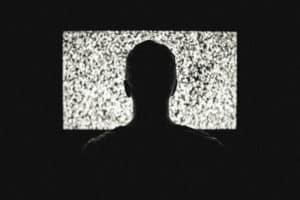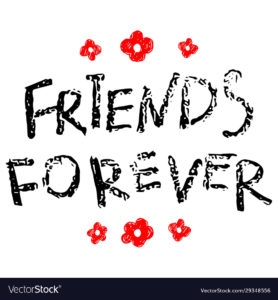When President Kennedy was shot, I had yet to enter the world. As a matter of fact I wasn’t even a twinkle in my mother’s eye. Still, many Americans can pinpoint where they were when they heard the news of the president’s death in Dallas.
As a child of the Sixties, I have other events that stand out in my mind as unforgettable. Newspaper headlines of the Vietnam War and the Watergate scandal caught my eye as they lay on our kitchen table. The Iran Hostage Crisis and long gas lines were also part of my childhood, and yet there are few times in my life that one event stopped me in my tracks.
The Space Shuttle Challenger Disaster was one of those times. On January 27, 1986, I was glued to the television with my college dormmates, watching our dreams and NASA’s break apart in 73 seconds after take-off. We swore we would never forget that day, and then 9-11 happened. It’s at this time of year that we remember that clear September morning that changed our world forever and, like JFK’s assassination, we remember exactly what we were doing when the news broke.
The day before the Attack on America, I’d taken a morning flight out of Boston with my husband and 18-month old daughter. We’d flown to San Francisco to see my in-laws for our annual visit. Because of the time change, we were up early and sitting around the kitchen table when the first plane struck. It wasn’t until that afternoon that we realized we’d exposed our daughter to the news as well. We found her in the living room, stacking up towers of blocks, then knocking them down like the Twin Towers.
It is hard to believe it’s been 16 years since that dreadful day. This summer my family took a bus to New York City to visit the National September 11 Memorial and Museum. We wanted our teenage daughters to view this history through their own eyes. Together we spent time reading the names of those who died. We touched the water in the twin reflecting pools, and walked past the Survivors’ Stairs that led many to escape and back to life.
For the longest time I refused to pick up a book on 9-11. I read the news and watched television specials but I preferred to read stories from other periods of history, such as World War II or the Vikings. That changed recently. I found a book that peeked my interest called The Red Bandanna: A Life, A Choice, A Legacy by Tom Rinaldi. It’s the true account of a previously unkown American hero from September 11th. Certainly, heroes rise up out of tragedies in surprising ways. Welles Crowther is one of those heroes. For the longest time after the Twin Towers fell, Crowther’s family had no idea what happened to him. They knew he worked on the 104th floor of the South Tower and that he’d gone to work early as usual. After that, there was no word. Silence.
Eight months after the attack, Crowther’s mother was reading a news account that mentioned a mysterious stranger wearing a red bandanna who led many to safety. In the midst of the harrowing ordeal, this mysterious man kept turning around to rescue more. That’s when his mother knew. That single detail—the red bandanna—defined her son. When Crowther was a young boy his father gave him his red bandanna from his back pocket before church. From that day forward, Crowther had kept that signature bandanna in his possession. Ironically, Crowther had been considering a life-change right before 9-11. For years he’d wanted to pursue a lifelong dream—to become a firefighter for the FDNY. In any role he’d played, he’d gone above in beyond his duty. He cared about others, and his heroic actions on 9-11 were of no surprise to those who knew and loved him. In her poem The Summer Day, Mary Oliver asks the reader a question: “Tell me, what is it you plan to do with your one wild and precious life?” The Red Bandanna answers this question for Welles Crowther—one man who made a difference with his life.
As it turns out another favorite book of mine, The Fall of Marigolds, by Susan Meissner demonstrates this resolve in the face of tragedy. While a work of fiction, Meissner’s novel weaves together the lives of two women through an embroidered scarf. For Clara Wood, it is the Triangle Shirtwaist Fire disaster that takes the life of the man she loves. For Taryn Michaels it’s her husband’s death in the World Trade Towers that turns her world upside down. Kirkus Review describes Taryn’s dilemma as follows: “A recently discovered photo from that day is published in a national magazine and now, 10 years after 9/11, Taryn is forced to relive the events and face the guilt she’s harbored because she acceded to a customer’s request and stopped by a hotel to pick up a marigold scarf, an action that delayed Taryn from joining her husband at Windows on the World for a celebration she’d planned.” Meissner reveals the heart of two survivors and the strength of character that often emerges from tragedy.
Sometimes as adults we forget we’re not the only ones who had to grapple with heartache after 9-11. Many children lost family and friends as well, and those children have grown up in the shadow of that fateful day. True, a variety of picture books have emerged on this topic for children, but I’m particularly impressed by Janet Nolan’s Seven and a Half Tons of Steel. While everyone should check out this book for Thomas Gonzalez’s illustrations alone (they are gorgeous), it is Nolan who uses a delicate hand to tell how the bow of the USS New York came to be fashioned from the remains of a World Trade Tower’s steel beam. How beautiful is that! Out of ashes comes renewed strength. I think I will cling to that hope this year on September 11th.
Nancy Ling is the Outreach Librarian at the Morrill Memorial Library in Norwood, Massachusetts. Read Nancy’s column in the September 14th issue of the Norwood Transcript and Bulletin.


